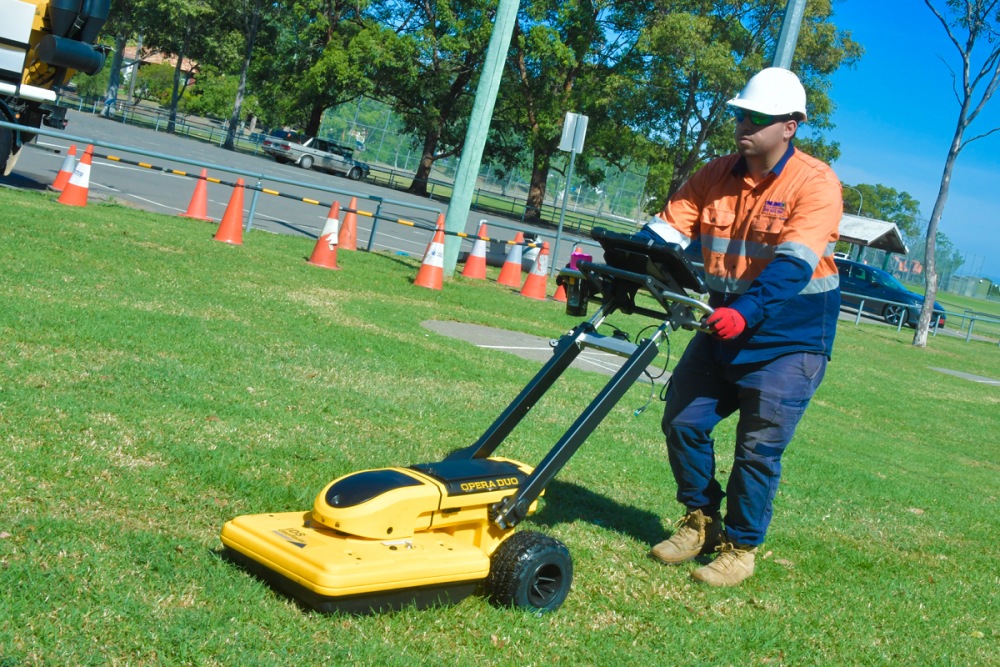Concrete scanning can be used for a variety of building reasons. One of these is to prevent damage to conduits and keep workers safe from physical harm. Older buildings, in particular, need scanning during renovations since workers frequently cut into existing concrete. In this case, the ability to detect interior parts is quite useful. There are 2 main concrete scanning methods: GPR and X-rays.
GPR Vs X-ray Scanning
• X-ray Needs Access to Both Sides of the Concrete, Making It Limiting
The main disadvantage of employing x-rays to locate subsurface utilities is that it necessitates access to both sides of the concrete, as the radioactive material must be applied to one side while the film is applied to the other. The use of x-rays is often limited to raised slabs due to this constraint. Because GPR only requires access to one side of the concrete, it can be used on slab-on-grade concrete that has been put directly on the ground.
• GPR Needs Extra Analysis and Interpretation
GPR, however, cannot identify the substance inside the concrete on its own. As such, specialists must rely on additional information to determine if the interior structure is a rebar or a conduit. This procedure entails recording the position of each anomaly and analyzing the resulting pattern to figure out what each mark means.
A string of anomalies spaced 12 to 18 inches apart, for example, is most likely rebar, whereas anomalies spaced at regular intervals are most likely post-tension cables. Depending on whether the photos reveal banding or have a uniform consistency, anomalies that are at an angle to the slab are likely conduits.
• GPR is Faster
GPR is also significantly faster than x-rays, particularly when dealing with huge areas. A typical scanning area is two feet square and takes around ten minutes to scan and mark. The accuracy in locating anomalies is around a quarter-inch, with a depth accuracy of 85 to 90 percent.
3 Items That Must Be Considered in GPR Scanning
1. Integrated Electrical Services
When cutting into concrete at a commercial location, reliable detection of embedded electrical conduits is critical. Damaged electrical services can cause power outages and pose a safety hazard to employees, in addition to the repair costs.
The method for detecting conduits varies depending on whether the concrete slab is elevated or at ground level. Before drilling or cutting, an elevated slab must be inspected to locate any embedded conduit. When slab-on-grade scanning is used, experts are looking for a spot where construction workers can dig a trench to install a water line or another utility.
2. Steel Reinforcements
After using GPR to find rebar and post-tension cables in concrete, technicians label these areas on the slab. These markers allow workers to drill into the concrete without jeopardizing its structural integrity or necessitating post-drilling repairs.
GPR scanning is particularly beneficial when preparing a property for rehabilitation, which frequently necessitates workers cutting into old concrete to construct new infrastructures like ducts, sewers, fire protection systems, plumbing, and electrical conduits.
3. Voids
Additionally, GPS technicians must be trained and experienced in finding voids, which are empty areas in the grade and sub-grade beneath the concrete. Voids are caused by a variety of factors on the ground, including pipe raptures, compaction, and soil erosion. Because they’re covered by both concrete and grade materials, they’re usually unnoticeable by visual inspection. GPR can assist keep employees from penetrating avoid and causing a collapse.
Concrete Scanning: Analysis
To assess the contents of a concrete building, concrete scanning is essential. Scanning contains information about the concrete’s thickness as well as information about the rebar’s spacing and depth in the concrete. Engineers can then use the information from the concrete analysis to make judgments about the slab. GPR scanning will specifically yield fast, accurate, and easily interpretable data!








































